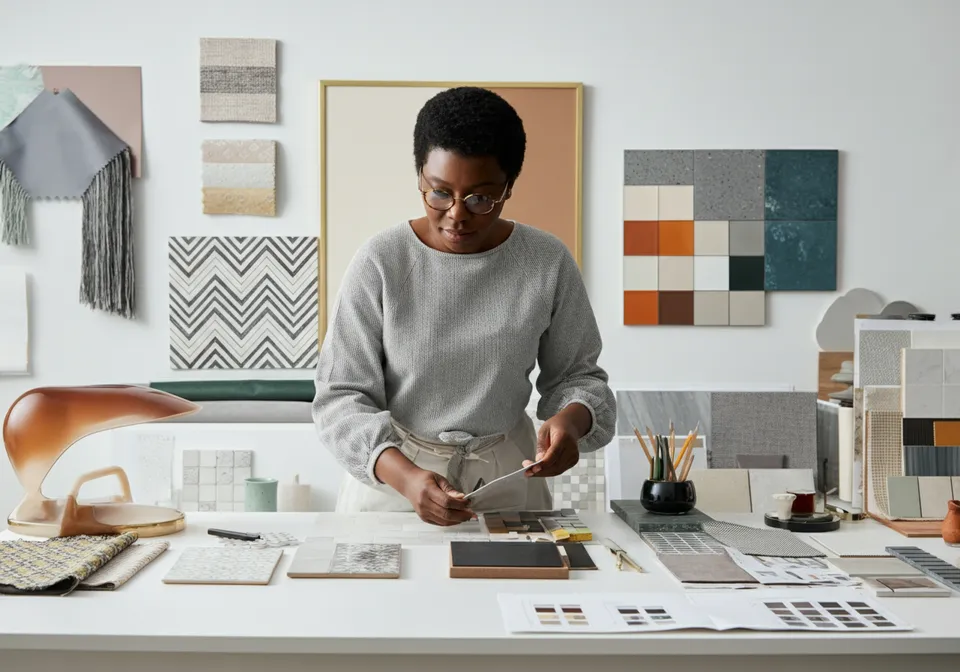
Remote work has become a cornerstone of many industries, including interior design. For design firms and freelancers, managing remote teams effectively requires intentional communication, streamlined tools, and a focus on accountability. One member of the community asked a great question:
“How do you approach managing remote team members effectively? Do you rely on specific tools or establish regular check-ins? Interested in how others maintain connection and productivity.”
This is a topic that resonates widely, especially as remote work continues to grow. Managing remote teams in interior design presents unique challenges, from coordinating across time zones to ensuring seamless collaboration on creative projects. Let’s dive into actionable strategies to enhance connection, productivity, and efficiency.
The Challenges of Managing Remote Teams in Interior Design
Before exploring solutions, it’s important to understand the common challenges of managing remote teams in our industry:
- Communication Gaps: Miscommunication or lack of clarity can derail projects.
- Time Zone Differences: Coordinating schedules can be tricky when team members are scattered across regions.
- Task Management: Without physical oversight, keeping track of progress requires the right tools and processes.
- Maintaining Team Connection: Remote work can feel isolating without regular check-ins or team-building initiatives.
Recognizing these obstacles allows you to proactively address them.
Tools for Managing Remote Teams
To manage remote teams effectively, adopting the right tools is crucial. Here are some popular options:
1. Project Management Software
Platforms like Monday.com, Asana, and Trello streamline task management and improve visibility. Assign tasks, set deadlines, and track progress all in one place.
Pro Tip: Use these tools to break larger projects into smaller tasks. This ensures clarity for each team member and avoids overwhelm.
2. Communication Tools
For real-time communication, platforms like Zoom, Slack, and Microsoft Teams are invaluable. These tools make it easy to host meetings, share updates, and keep the entire team connected.
3. File Sharing and Collaboration
For sharing renderings, floor plans, and other design files, tools like Google Drive, Dropbox, or Studio Designer are ideal. These platforms provide secure, centralized storage for easy access.
Best Practices for Managing Remote Teams
1. Set Regular Check-Ins
Many successful teams swear by a structured meeting schedule. Start the week with a Monday morning meeting to set priorities and end with a Friday check-in for accountability.
Example: Use the Monday meeting to outline goals for the week and the Friday session to review progress and address challenges.
2. Focus on Clear Outcomes
To avoid micromanaging, establish clear goals and outcomes for each team member. Empower them to take ownership of their tasks while providing regular updates.
Tip: Some managers request team members to BCC them on emails that “check off” tasks. This provides visibility without unnecessary micromanagement.
3. Emphasize Communication
Strong communication is the backbone of remote team management. Consider these approaches:
- Host a project kickoff meeting for every new assignment.
- Encourage open dialogue for questions or feedback.
- Use video calls to build rapport and ensure clarity.
4. Create a Supportive Culture
Foster a culture of trust and autonomy. When team members feel empowered to make decisions and lead within their roles, productivity and satisfaction often increase.
Insights from the Community
The design community is brimming with ideas on managing remote teams in interior design. Here are some insightful perspectives:
- @idgreenlist: “Team meeting every Monday morning – paramount. We use Monday.com to assign tasks and keep projects on track, as well as manage procurement, etc. Deadlines are critical, subcontractors just need to be able to meet your deadlines and your deadlines need to be a week ahead of the ACTUAL deadline. 1/2 my team is remote, like not even in the same state as me. And 3 of my people are subcontractors, only 2 are employees.”
- @jeannieandresen_: “Definitely recommend a standard Monday morning meeting to set priorities and then a Friday meeting for accountability. Additionally, use a project management software for tasks so you can see throughout the week what’s being accomplished and what isn’t. In the beginning, I recommend having your team member BCC you on emails when they are sending out emails that ‘check off’ a task. That’s a great way to communicate something is done without you needing to check in on it, which could be perceived as micromanaging.”
- @chadofall_chadillac: “My entire team is remote, and we have been prior to COVID. Process is key, regular communication, and setting clear outcomes that each member can self-manage effectively and understand the expectations. I think that people heavily value autonomy in this day and age, so as opposed to ‘managing’ the team, my feeling is that by creating a culture where each team member is empowered to be a leader and to achieve clear outcomes within that leadership role, it allows them to effectively manage themselves and report accordingly on progress.”
These approaches highlight the importance of structure, communication, and fostering independence in remote teams.
Key Takeaways for Managing Remote Teams
Managing remote teams in interior design doesn’t have to be overwhelming. Here are the main takeaways:
- Use the Right Tools: Leverage platforms like Monday.com or Zoom to streamline processes.
- Establish Routines: Consistent check-ins, like weekly Monday and Friday meetings, keep everyone aligned.
- Promote Autonomy: Empower team members to take ownership of their roles while maintaining open communication.
- Prioritize Connection: Use video calls and team-building exercises to maintain strong relationships across distances.
Final Thoughts
Managing remote teams in interior design is an art in itself, but with the right tools and strategies, it’s possible to create a highly productive and connected team. By focusing on clear communication, structured processes, and empowering team members, you can tackle the unique challenges of remote work head-on.
What’s your approach to managing remote teams in interior design? Share your insights in the comments—I’d love to hear your tips and tricks!

